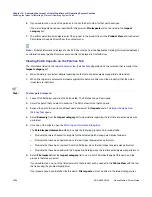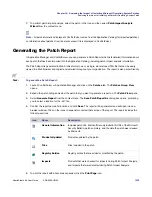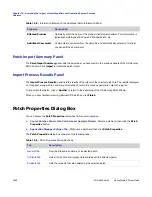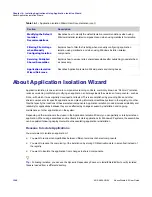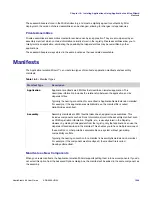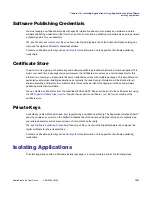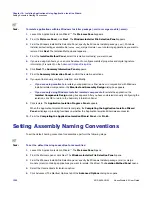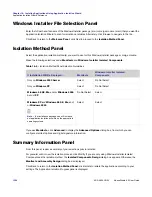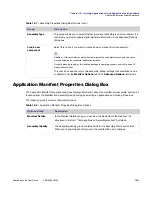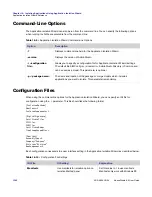
Chapter 16: Isolating Applications Using Application Isolation Wizard
Isolation Methods
1348
ADS-0950-UG00
AdminStudio 9.5 User Guide
Isolation Methods
There are two isolation methods supported by the Application Isolation Wizard™: Manifests and Assemblies and
Windows Installer Isolated Components.
Assemblies and Manifests
Application isolation using assemblies and manifests is the recommended isolation method for Windows XP. These
assemblies and manifests provide the same end result as Windows Installer isolated components, but keep all
information outside of the registry and do not require the components to be installed in the same folder as the
application. This reduces the chance of errors after isolation resulting from how the application was written.
Assemblies and manifests only work under the Windows XP operating system.
Windows Installer Isolated Components
Application isolation using Windows Installer isolated components is for Windows 98 SE, Me, and 2000. It can also
be used on Windows XP, but using assemblies and manifests is the better solution. The isolated component
method copies shared files (typically DLLs) into an application’s folder instead of a shared location. The application
then uses these files instead of global ones, preventing modifications made by other applications from affecting the
shared files. As a result, the application always uses the versions of these files with which it was deployed.
To instruct an application use the private files rather than shared versions, the Application Isolation Wizard
populates the IsolatedComponent table with the necessary logic to use private files stored in the same folder as the
application. When Windows Installer performs the setup, data from the IsolatedComponent table populates a .local
file, which ultimately directs how to use the private files.
Windows Installer isolated components still require some information to be written to the registry, and also require
the associated components to be in the same folder as the application. While in most cases this will still provide
required isolation, depending on how the application was written, the movement of these associated components
from their original locations may prevent the application from functioning correctly.
Assemblies
Assemblies are DLLs or other portable executable files that applications require to function. Under Windows XP,
these can be either shared or private. Private assemblies are typically stored in the same directory as the
application they support. Shared assemblies are stored in the WinSxS directory, and are digitally signed.
By creating manifests for assemblies, the Application Isolation Wizard™ allows you to create self-contained
applications that can use different versions of the same DLL or other portable executable, without any version
conflicts.
Shared Assemblies
Shared assemblies are assemblies available to multiple applications on a computer. Applications that require these
assemblies specify their dependence within a manifest. Multiple versions of shared assemblies can be used by
different applications running simultaneously.
Summary of Contents for ADMINSTUDIO 9.5
Page 1: ...AdminStudio 9 5 User Guide Version 9 5...
Page 50: ...Contents 50 ADS 0950 UG00 AdminStudio 9 5 User Guide...
Page 52: ...52 ADS 0950 UG00 AdminStudio 9 5 User Guide...
Page 156: ...156 ADS 0950 UG00 AdminStudio 9 5 User Guide...
Page 440: ...440 ADS 0950 UG00 AdminStudio 9 5 User Guide...
Page 1090: ...1090 ADS 0950 UG00 AdminStudio 9 5 User Guide...
Page 1426: ...1426 ADS 0950 UG00 AdminStudio 9 5 User Guide...
Page 1686: ...1686 ADS 0950 UG00 AdminStudio 9 5 User Guide...
Page 1794: ...Chapter 24 AdminStudio Public API Reference 1794 ADS 0950 UG00 AdminStudio 9 5 User Guide...
Page 1842: ...Index 1842 ADS 0950 UG00 AdminStudio 9 5 User Guide...

